CREATIVE PROJECT BY CARINE CHAN (’23)
Ars Electronica
Performing Art (Music Piece)
An Interpretation of Le Morte d’Arthur
Medieval Romance: Magic and the Supernatural (YHU2309)
2022
Artist’s Remarks
While brainstorming ideas for this creative assignment, I decided to go back to what I do best and love most: music. It is especially fitting considering many of the medieval texts we have studied in this semester, like the romances and lais, were themselves performed orally or to music. In pondering how best to bring across themes such as forbidden love, treachery, danger, death, magic, and religiosity which I see in Le Morte d’Arthur, I decided that what could best capture all these elements was a musical impression. Thus, this piece is meant to capture some main themes of Le Morte d’Arthur, not create an exact soundtrack for it. I say it is medieval-inspired because I have done my best to adhere to medieval music forms, theory, practice, and instrumentation1 – these I will further elaborate on later. The piece tracks the rough development of Le Morte d’Arthur from the birth of Arthur to his demise, as well as that of the Round Table. While it would have been nice to include all twenty-one books of Le Morte d’Arthur, due to time constraints I will only be focusing on a few. With this in mind, I have selected enough of Le Morte d’Arthur to fit a piece of approximately five and a half minutes.
The piece is structured into five sections, each around one minute in length. Their titles are “Arthur’s Birth and Coronation,” “The Fight,” “The Sangrail,” “Romance,” and “Death of Camelot,” respectively. It is entitled Ars Electronica because it has been programmed, played, and recorded on an electronic keyboard instrument called the Electone.2 It is also a wordplay on ‘Ars Nova,’ a style of music which flourished in France in the 14th century, about which a treatise was written by Phillip de Vitry.3 My choice of the Electone is both symbolic and practical: first, it has three keyboards – one for right hand, one for left and one for the foot, much like the medieval positive organ.4 In that sense, it is an electronic organ, the modern-day counterpart to its medieval cousin. More importantly, the Electone’s versatility enabled me to programme and fine-tune the sound settings such that they resembled medieval instruments as closely as possible. Its multiple keyboards also allowed me to play three or more different instruments at the same time.
A Note on Medieval Styles
This piece posed a particular challenge for me as I had never encountered medieval music before. In my classical musical training, we were schooled extensively in Renaissance and Baroque, but nothing earlier than that. As such, I embarked on my own quest of researching medieval music. One of the first things that stood out to me was the lack of regular metre or bar-lines. At that time, the modern system of time signatures which we use today had not been invented yet, so the music had specific rhythmic patterns but not bar-measures, per se.5 Thus, in my music I tried to replicate the free-flowing, meandering nature of medieval music.6 Another feature of note is the use of ornaments7 at liberty, in an almost improvised manner.8 I too have tried to follow that kind of ornamentation in my music. Medieval music also uses modes instead of the musical ‘keys’ we are familiar with today.9 Hence, I have used exclusively Gregorian modes in my composition as well.
1. Arthur’s Birth and Coronation
For the first part of this section, Arthur’s birth theme, I chose the most basic Medieval instrument available: the human voice. I used the Dorian mode10 and minor chords to give it a sombre feel. This recalls the grim circumstances of his birth: using Merlin’s help to disguise himself as Igraine’s husband the Duke of Cornwall, Arthur’s father Uther had tricked Igraine into going to bed with him, only hours after the real Duke’s death in battle. The sombreness of the music represents both the solemness of death and the graveness of treachery. I have chosen the lower male voices to add to the heavy atmosphere, making it sound like a mass.11 This adds a layer of irony: holy music being played for a child born out of trickery, the very violation of Christian and knightly values. In line with Uther’s trickery towards Igraine, I have added my own twist in the music – according to the usual Dorian mode, the B flat note is used instead of B natural. Up until the end of the first part, I consistently used B flat to prime listeners to expect the B flat every time; however, at the ending cadence of the first part, I jump to a B natural, changing the chord from a minor-key G chord (G, B flat, D) to a major-key G chord (G, B natural, D). It is a plot twist of sorts which then leads into the second part of this section, Arthur’s coronation theme. The tone and beat of the theme are celebratory, both to celebrate Arthur’s success in proving his worth through pulling the sword out of the stone, and as an exaltation of his virtues. This theme is also written in the Ionian mode12, which is known as the “pure” mode because of its lack of accidentals13. This is to show that, despite the treacherous circumstances of his birth, Arthur turned out to be noble and good. Thus, the ‘purity’ of the key is an allusion to Arthur’s purity; it is meant to symbolize his knightly virtue. The instrumentation also changes to a mixture of organ and voice. According to medieval thought, wind instruments were said to “arouse or exasperate amorous spirits, and to an extent move them to the sweetness of [religious] devotion.”14 Since the organ consisted of a multitude of windpipes, it was deemed the only instrument allowed for church use. Seeing as Arthur was christened before he took the throne, the use of the organ adds to atmosphere of holiness and jubilation, signaling the ascension of a noble and worthy king. Inspiration for this part was drawn from Gaude Felix Francia, the 1226 conductus for King Louis of France’s coronation and anointment.15
2. The Fight
In this section I used the medieval ivory horn and tubular trumpet. Although medieval brass instruments used only plain tones (no vibrato),16 I was unable to remove the preset vibrato in the sounds I used on the Electone. I chose these instruments because they are strong and stately, symbolic of the kind of bravado knights display in fights. The tone is authoritative and demanding, mimicking knights engaged in combat. This section features a layering of voices in polyphony – a feature that started to take root only in the late medieval period.17 The trumpet comes in first, followed by the horn in inversion, then subsequently both play in a pattern of interweaving melodic lines. The lines weave in and out of each other, crossing and clashing, representing the conflicts Arthur and his knights had with other kingdoms over the course of the book, such as Arthur’s campaign against Rome. I have also added a flute in the background, which appears at unexpected intervals and flits up and down uncontrollably. This represents the unpredictable magical interference of Merlin, Nineve and Morgan le Fay – one never knew when or where they might strike or choose to help. Even if they were not part of the main action, these magical characters were often lurking on the sidelines, much like the flute does here. Moreover, the flute adds to the sense of destabilization reminiscent of conflict. Additionally, I used the Locrian mode18, which contains a diminished interval between B and F. This diminished interval creates a highly dissonant sound, thus I have extensively exploited it, along with big melodic leaps, to represent the chaos of battle.
3. The Sangrail
This section represents the various knights’ quest for the Sangrail, as instructed by Arthur. I once again used the organ, as well as the harmonically “pure” Dorian mode19 to symbolize the holy nature of this quest. The tempo is quick and the mood more upbeat, to mirror the excitement of going on a quest-adventure. However, although the melody ends on the mode’s tonic ‘C,’ there is an unexpected crescendo added, which suggests that all is not what it seems and there is danger lurking ahead. As we know, many knights did not come back from the quest for the Sangrail, and the crescendo is supposed to represent this.
4. Romance
This section interprets both Tristan and Isolt, and Lancelot and Guinevere’s stories. Even though they are slightly different, I see a parallel between both in that both are a story of a forbidden love, held on through trickery and deceit, that ends inevitably in tragedy. In this section I have used the pan flute and harp: both have associations with amorous Greek figures – the pan flute with the fertility god Pan, and the harp with the virtuosic lover Orpheus. Furthermore, both have a mild, sweet tone which gives the music an air of tenderness, otherworldliness, and delicacy, which is how romance characters often describe the feeling of falling in love. Specifically, the harp plays a series of soft arpeggiated chords much like a dance, and the two pan flutes dance with each other in polyphony. The higher flute represents the females like Isolt and Guinevere, while the lower pan flute represents the males like Tristan and Lancelot. The way the flutes communicate with each other is reminiscent of lovers’ embraces and intimate conversations. However, keeping in mind that these were forbidden romances, the sweetness does not last long: the mode quickly changes from the joyous Mixolydian20 mode to the more ominous, minor-sounding Phrygian21 mode. The music slows down menacingly, and the harp breaks its strumming pattern to play a flush of notes, foretelling the tragedy to befall these lovers.
5. Death of Camelot
In the final section, the music evokes not only Arthur’s death, but the dissolution of the Round Table with it. The music is modelled after a mourning mass – it is chordal organ music which is slow, stately, and grave. Unlike the earlier sections where there is a high degree of ornamentation, this section pulls back some of the ornaments to deliver a plainer line, reminding us of the solemnity of Arthur’s death. All the chords used are minor chords, with the exception of F, adding to the somber tone. The harmonic chord structure is also symbolic: I have used a pattern called the circle of fifths22 to represent the knights of the Round Table. The original circle of fifths for this mode should be B minor → F# minor → C# minor → G# minor → D# minor (enharmonic to Eb)23 → Bb minor → F → C minor → G minor → D minor → A minor → E minor → B minor. However, before the music even has a chance to reach E minor, I break the circle by going to a different chord, suggesting the breakdown of the Round Table. Although the circle of fifths is a pattern only developed during the Baroque era, I chose to make a creative departure from medieval music theory just this once, for the symbolic character of the circle.
At the end, the music resolves from dissonant chords to the tonic of the Hypodorian mode24, A minor. The Hypodorian mode is also known as the “natural minor” mode for its highly minor-sounding character, thus adding to the gloomy mood of the finale. I also added tolling church bells to add to the sense of death and finality in this last section. With this, Arthur and his Round Table are no more.
ANNEX


FOOTNOTES
1 Nigel Wilkins, “Instruments and their Music,” The Cambridge History of Medieval Music, 451-474.
2 For more information, refer to https://sg.yamaha.com/en/products/musical_instruments/keyboards/electone/els-02c/index.html
3 Fuller, “A Phantom Treatise of the Fourteenth Century? The Ars Nova; Ars nova: French and Italian Music in the Fourteenth Century.”
4 Case Western Reserve University Early Music Instrument Database, “Organ (Medieval).”
5 John Caldwell, “Rhythm and Metre,” The Cambridge History of Medieval Music, 718-746.
6 An example would be Joseph Payne’s transcription of the 15th century manuscript Praeambulum super D, here played by Catalina Vicens on a 15th century church organ: https://www.youtube.com/watch?v=n0Pq1PSts3g
7 Musical embellishments like trills, mordents and turns.
8 Cambridge History of Medieval Music.
9 Liane Curtis, “Mode,” Companion to Medieval and Renaissance Music, 255-264.
10 Mode which spans mostly white keys from D to D, with the exception of B flat. Refer to Annex for diagram of all the modes.
11 Such as the Kyrie mass, exemplified in this performance by Oxford Camerata: https://www.youtube.com/watch?v=Y47JdUI_PhE
12 The mode that spans the white keys from C to C.
13 Flats, sharps or any alterations to the note.
14 Case Western Reserve University Early Music Instrument Database, “Organ (Medieval).”
15 Peter M. Lefferts, “Tonal Organization in Polyphony, 1150–1400,” The Cambridge History of Medieval Music, 747-773; Refer to this performance of Gaude Felix Francia: https://www.youtube.com/watch?v=7Q81B9xqo94
16 Cupeiro, “Medieval Horn,” https://www.youtube.com/watch?v=m3Ssn5UBT_A; Case Western Reserve University Early Music Instrument Database, “Trumpet (Medieval).”
17 Peter M. Lefferts,“Tonal Organization in Polyphony, 1150–1400,” The Cambridge History of Medieval Music, 747-773; Roman Hankeln, “Liturgy and Plainchant, 1150–1570,” The Cambridge History of Medieval Music, 774-800.
18 Mode which starts on B.
19 Refer to section ‘Arthur’s Birth and Coronation’ above for explanation.
20 Mode that spans the white keys from G to G.
21 Mode that spans white keys from E to E.
22 A pattern where the music moves through chords which are a fifth apart from each other until it comes back to the starting chord (Refer to Annex).
23 Enharmonic notes are notes which share the same pitch but have different letter names; # means sharps and b means flats.
24 The mode that spans the white keys from A to A.
25 https://www.classicfm.com/discover-music/music-theory/what-is-the-circle-of-fifths/
REFERENCES
Case Western Reserve University College of Arts and Sciences. “Flute (Medieval).” Early Music Instrument Database. Case Western Reserve University. Accessed May 2, 2022. https://caslabs.case.edu/medren/medieval-instruments/flute-medieval/.
Case Western Reserve University College of Arts and Sciences. “Harp (Medieval).” Early Music Instrument Database. Case Western Reserve University. Accessed May 2, 2022. https://caslabs.case.edu/medren/medieval-instruments/harp-medieval/.
Case Western Reserve University College of Arts and Sciences. “Organ (Medieval).” Early Music Instrument Database. Case Western Reserve University. Accessed May 2, 2022. https://caslabs.case.edu/medren/medieval-instruments/organ-medieval/.
Case Western Reserve University College of Arts and Sciences. “Trumpet (Medieval).” Early Music Instrument Database. Case Western Reserve University. Accessed May 2, 2022. https://caslabs.case.edu/medren/medieval-instruments/trumpet-medieval/.
Cupeiro, Abraham. Medieval Horn. YouTube, 2021. https://www.youtube.com/watch?v=m3Ssn5UBT_A.
Everist, Mark, and Thomas Forrest Kelly. The Cambridge History of Medieval Music. Cambridge, Cambridgeshire: Cambridge University Press, 2018.
Fuller, Sarah. “A Phantom Treatise of the Fourteenth Century? The Ars Nova.” Journal of Musicology 4, no. 1 (1985): 23–50. https://doi.org/10.1525/jm.1985.4.1.03a00020.
Knighton, Tess, David Fallows, and Liane Curtis. “Mode.” Essay. In Companion to Medieval and Renaissance Music, 255–64. Oxford, Oxfordshire: Oxford University Press, 2003.
Machaut, Guillaume de. Guillaume De Machaut: La Messe De Nostre Dame – Kyrie. YouTube, 2009. https://www.youtube.com/watch?v=Y47JdUI_PhE.
Malory, Thomas, and Helen Cooper. Le Morte D’arthur. Oxford, Oxfordshire: Oxford University Press, 1998.
Marshall, Kimberly. “Medieval Organ Music.” Vox Humana, October 14, 2018. https://www.voxhumanajournal.com/marshall2018.html.
MasterClass. “Medieval Era Music Guide: A Brief History of Medieval Music – 2022.” MasterClass. MasterClass, December 7, 2020. https://www.masterclass.com/articles/medieval-era-music-guide#a-brief-history-of-medieval-music.
Vicens, Catalina. Medieval Organ C.1425-1430 Ostönnen / Praeambulum Super D. YouTube, 2017. https://www.youtube.com/watch?v=n0Pq1PSts3g.
IMAGE CREDITS
[Featured Image] https://www.thoughtgymnasium.com/articles/the-music-o

























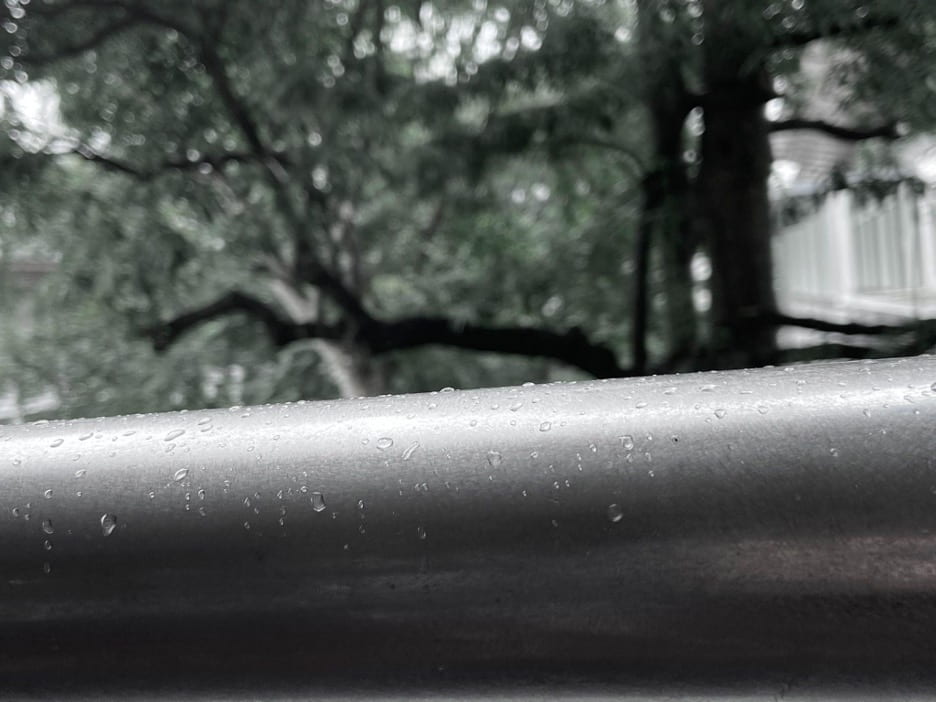




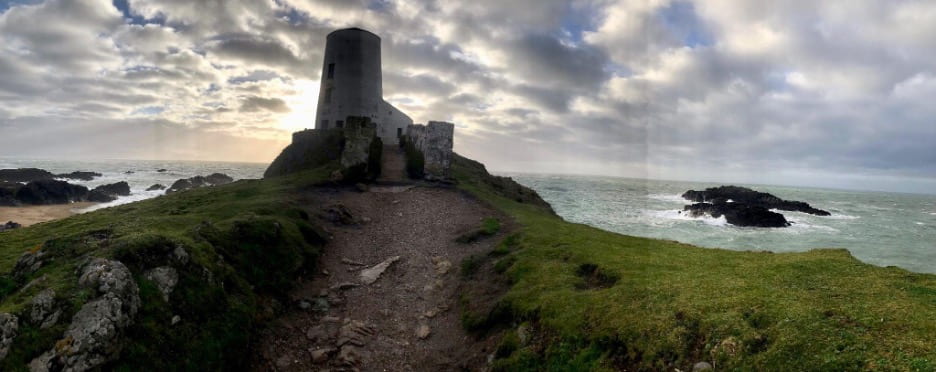
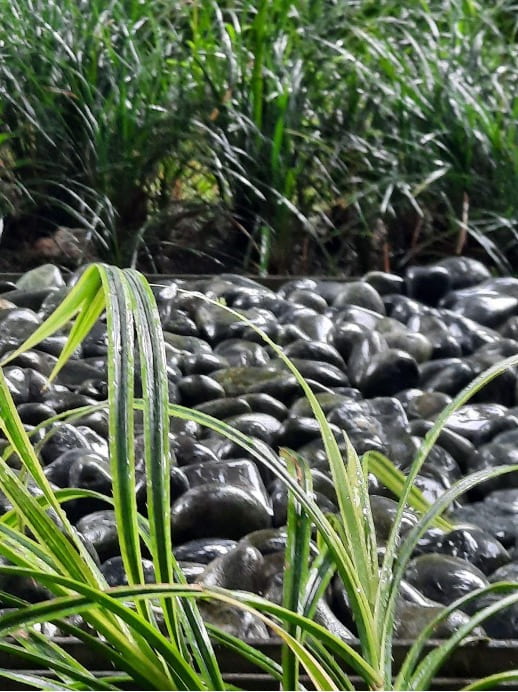






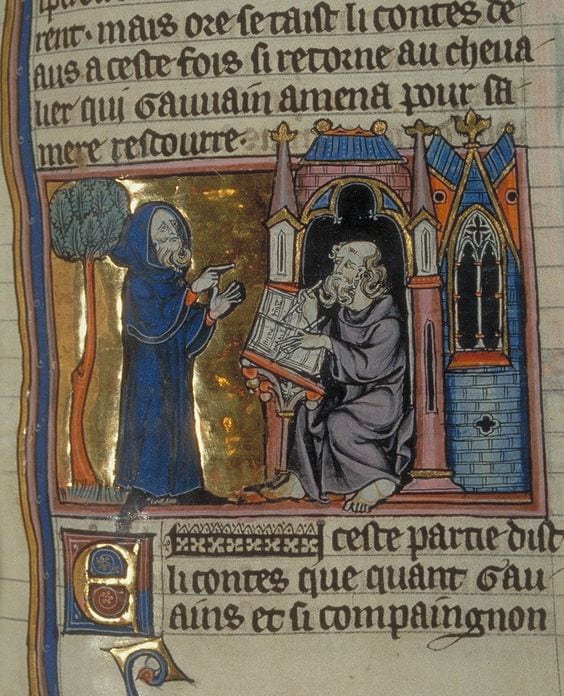
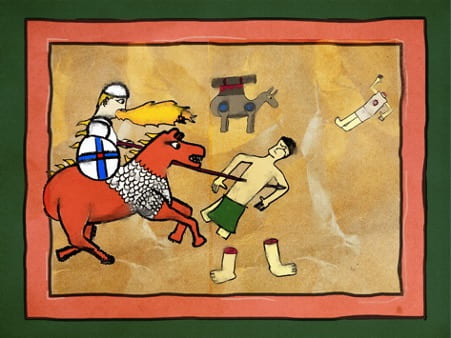


 What seems to be a giant fish represents a whale in the process of toppling a boat.4
What seems to be a giant fish represents a whale in the process of toppling a boat.4

